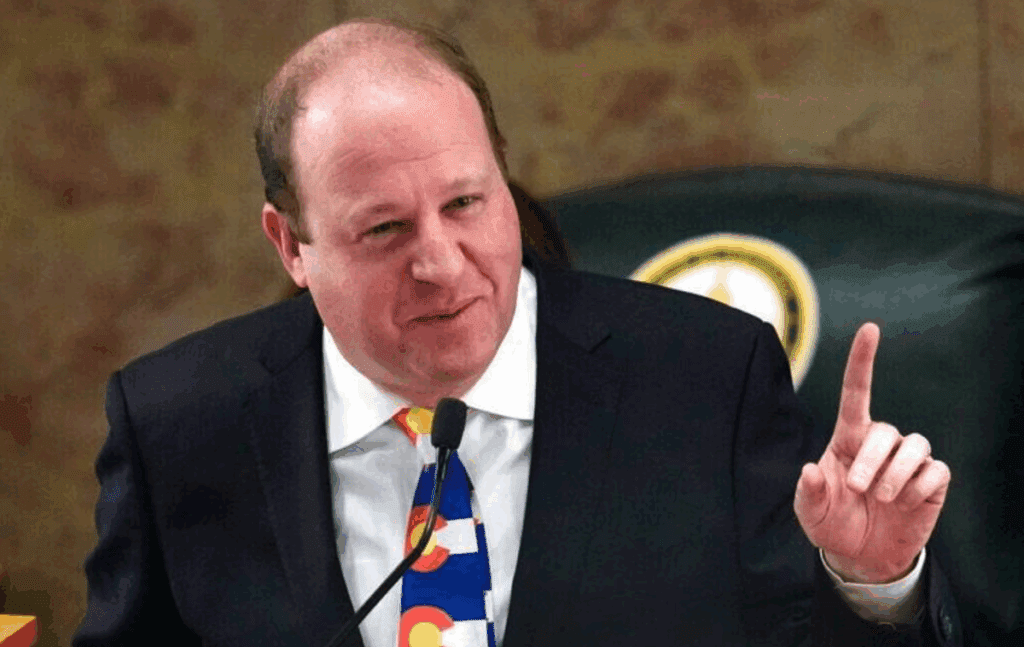Gov. John Hickenlooper: use severance taxes for funding water plan

Gov. John Hickenlooper, on another stop on his farewell tour, talked to the water community Thursday that largely backed the development of the Colorado water plan in 2015 and what the future holds for Colorado water.
Hickenlooper was initially expected to talk about his water legacy during the Colorado Water Congress luncheon in southeast Denver, but instead addressed how he regards water and how the state ought to pay for the water plan’s estimated $20 billion price tag.
Prior to the start of Hickenlooper’s remarks, the Water Congress took the pulse of those in attendance about what the next governor should do with the water plan. Seventy-three percent said “use it!,” another 8 percent said the next governor should ignore it, and 19 percent said the state should embark on a different path with regard to its water future.
Pollster Floyd Ciruli said the results show the new governor has to make sure the water plan and its issues remain a top priority, along with rural broadband, transportation and public education funding.
Hickenlooper referred to his recent State of the State speech and his reference to “topophilia.” No, that’s not something bad – it’s a love of place, according to the governor. And Colorado must do all it can to preserve its clean air and water, part of the most important parts of the state’s infrastructure, he said.
Funding for the water plan has not been identified, Hickenlooper admitted. The governor said he is looking for a bipartisan approach to funding the water plan, in part to avoid the sensitivity that people have to being asked for more taxes. That could include, he said, using severance taxes.
But it would take a structural change to how severance taxes are levied in order to raise the kind of revenue anticipated to cover the state’s share of the water plan costs: around $100 million per year for the next 30 years, beginning in 2020 as envisioned by the water plan.
Hickenlooper explained the state has some of the lowest severance taxes in the nation. And that hasn’t gotten any better after a 2016 lawsuit from BP that challenged certain deductions on oil and gas equipment. BP won that lawsuit, which forced the state to tap tens of millions of dollars from severance taxes to cover not only BP’s deductions but that of other oil and gas companies. That lawsuit exposed structural problems in the way severance taxes are collected, Hickenlooper said.
A structural change to severance taxes is something the General Assembly will have to deal with, most likely through a ballot measure, the governor added.
The idea of using severance tax money for the water plan isn’t that far-fetched an idea. Those dollars have been going to water projects for years, mostly to water providers for infrastructure and through grants and loans, although in small amounts. And severance taxes have been tapped directly to fund the initial implementation of the water plan, in areas such as alternative transfers of water in agriculture, conservation and water efficiency. But the state has, in times of trouble, also raided the severance tax fund to cover shortfalls in the budget, to the tune of $322 million in the past two recessions.
Hickenlooper said he believes the oil and gas industry will not stand in the way if the state seeks higher severance taxes, based on conversations he’s had with oil and gas CEOs. “They’re not complaining” about how much severance tax they pay in Colorado, especially after winning the BP court case.
There’s another reason to look homeward when it comes to funding the water plan, and that’s Washington. Hickenlooper said the White House intends to shift the costs for infrastructure to states and municipalities. “We need to be ready and to have plans on our own turf,” he said.
He also addressed the current position of Republicans in the General Assembly that much of the state’s infrastructure needs can be funded out of existing revenues, and that could include the water plan, too.
“Some people think there is wasted money in state government,” he said. “I’m not clumsy with budget and waste,” which he said drew on his own experience as a small business owner prior to entering politics. “There isn’t a hidden place where you’ll find $300 million or $500 million a year for infrastructure,” which he said would include both transportation and water.
There are still big “wild-ass” ideas that the governor would like to see Colorado explore as it pertains to the water plan, and one area is conservation, particularly as it applies to groundwater. The state needs a system for storing and moving that water around, perhaps storing it in aquifers and underground reservoirs. It’s an idea contained in a recent study released by the Colorado Water Conservation Board on potential storage of water along the South Platte River, which the study said sent eight million acre-feet of water to Nebraska over the last 20 years, in excess of the required amount under a multi-state compact.
Hickenlooper noted an aquifer recharge project has been successful in Arizona, but explained that such a project in Colorado would take public-private partnerships in order to work. And that’s likely without help from Washington, he said, where the federal government will no longer make the investments in water that it has made over the past 30 to 40 years.
Economist Dick Brown told Colorado Politics agreed that the idea of using severance tax dollars for the water plan would require structural change. Brown had discussed eight options for funding the water plan during last summer’s Water Congress conference, but severance taxes wasn’t on that list.
Brown explained that the issue is whether or not it would take an increase in severance tax as it is currently arranged, or under a different structure. “We have a ‘family of taxes’,” Brown explained: different methodologies for coal, oil and natural gas and mineral extraction, and it’s somewhat based on the price of the commodity. It’s kind of a “one-crop banana republic,” he said, where a one-cent drop in the price of oil can result in a loss of hundreds of thousands of dollars.
The state could decide that formula doesn’t work, but Brown said he doesn’t know of anyone who’s looking for something different.
The idea of a severance tax change to fund water projects is interesting but perhaps not likely to happen as Hickenlooper suggests, according to Ted Kowalski, a senior program officer at the Walton Family Foundation Colorado River Initiative. Kowalski said the governor’s support for the importance of funding water infrastructure was a positive. But without sustainable funding, Kowalski said, “the water plan just sits on the shelf.”
That plan is definitely Hickenlooper’s legacy in water, Kowalski said, and if for no other reason it spurred more cordial conversations among those interested in Colorado water future. “There’s more trust than there used to be, and that’s critical to having conversations about water management” for Colorado’s future.
“In my view, you’ve made real progress on one of the most frustrating and time consuming questions” facing the state, Ciruli said at the close of Hickenlooper’s remarks. The governor responded that in the end, it takes people who believe in government, as frustrating as it sometimes can be.
Noting the gubernatorial pay at $90,000 per year (it will go up for the next governor), Hickenlooper said he was never in it for himself, and that he doesn’t intend to “go out to the ex-governor club and get giant consulting fees. Once I finish a year from now, I hope the state is better than I found it.”












